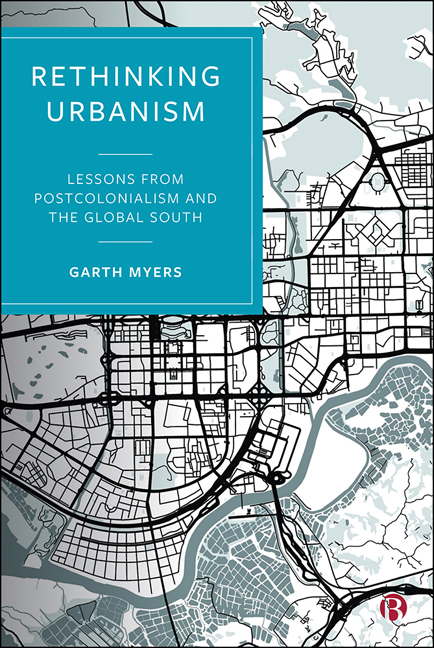Book contents
- Frontmatter
- Dedication
- Contents
- List of Figures
- List of Acronyms
- Glossary of Foreign Terms
- Acknowledgments
- Preface
- Introduction: Rethinking Urbanism from the South
- 1 Southern Processes of Planetary Urbanization in Hartford
- 2 Villages in the City: Patterns of Urbanization in the Pearl River Delta, Dakar, and Zanzibar
- 3 The Useful and Ornamental Landscapes of British (Post)colonialism
- 4 Submarine Urbanism: Cities People Make in ‘the Here and the Elsewhere’
- 5 ‘The Whole World Is Made in China’: Products and Infrastructures of Dis/connection
- 6 Urban Politics and Policy in a Southern Urban Planet
- Epilogue
- References
- Index
- Frontmatter
- Dedication
- Contents
- List of Figures
- List of Acronyms
- Glossary of Foreign Terms
- Acknowledgments
- Preface
- Introduction: Rethinking Urbanism from the South
- 1 Southern Processes of Planetary Urbanization in Hartford
- 2 Villages in the City: Patterns of Urbanization in the Pearl River Delta, Dakar, and Zanzibar
- 3 The Useful and Ornamental Landscapes of British (Post)colonialism
- 4 Submarine Urbanism: Cities People Make in ‘the Here and the Elsewhere’
- 5 ‘The Whole World Is Made in China’: Products and Infrastructures of Dis/connection
- 6 Urban Politics and Policy in a Southern Urban Planet
- Epilogue
- References
- Index
Summary
Rethinking urbanism means rethinking it from the ground up, from literal and metaphorical places ‘South’ of where urbanism has been previously defined. This book is reckoning with a world of interconnected cities linked to one another in a process of planetary urbanization, but which I have tried to see here, following Glissant, as a process of everchanging ‘relation’ between cities. Glissant emphasized the importance of returning to the ‘point of entanglement’, and I have attempted to do so in numerous ways in this book. Many scholars from Slater (1992) to Robinson (2016a) and beyond have stressed the centrality that learning from ‘elsewheres’ must assume in a cosmopolitan and truly global urban studies. With the growing literature of planetary urbanization pushing toward a more global urban studies, my aim here has been to recenter the discussion southward, with that ‘South’ reconceived.
This book asked what has been shaping contemporary urbanism and urbanization for the new urban planet, and what shapes urbanism and urbanization take. A half-dozen thematic starting places toward answers were suggested. Historical processes – from the ‘underside of our history’ – genocide and persistence, slavery and emancipation, and, perhaps most of all, colonialism and postcolonialism, remain central to the making and reframing of urban areas and urban environments. Along with colonial processes, the geographical patterns of land use planning and design and resistance to them form another starting place. Migration, translocality, and their cultural creations served as another. Infrastructure and trade joined flows of policies as further means for analyzing the urban planet.
Walsh and Mignolo (2018: 1) stress that ideas such as ‘pluriversal’ thinking or relationality are not means to replace one universalism with another; to claim to be ‘in possession of a decolonial universal truth would not be decolonial at all’. Thus, this book is not arguing for replacing what Glissant would call a Euro-American ‘mono-root’ with a different mono-root. Likewise, neither the thematic starting places nor my urban areas of focus could be considered comprehensive or all-encompassing. Thinking of ‘common pots’ as a way of reimagining the urban planet does not mean saying everyone fits in the same pot.
Fluidity and mobility flow through the chapters. This is literally the case for the cities examined, since all are or were port cities. But the fluidity is also metaphorical.
- Type
- Chapter
- Information
- Rethinking UrbanismLessons from Postcolonialism and the Global South, pp. 179 - 182Publisher: Bristol University PressPrint publication year: 2020

